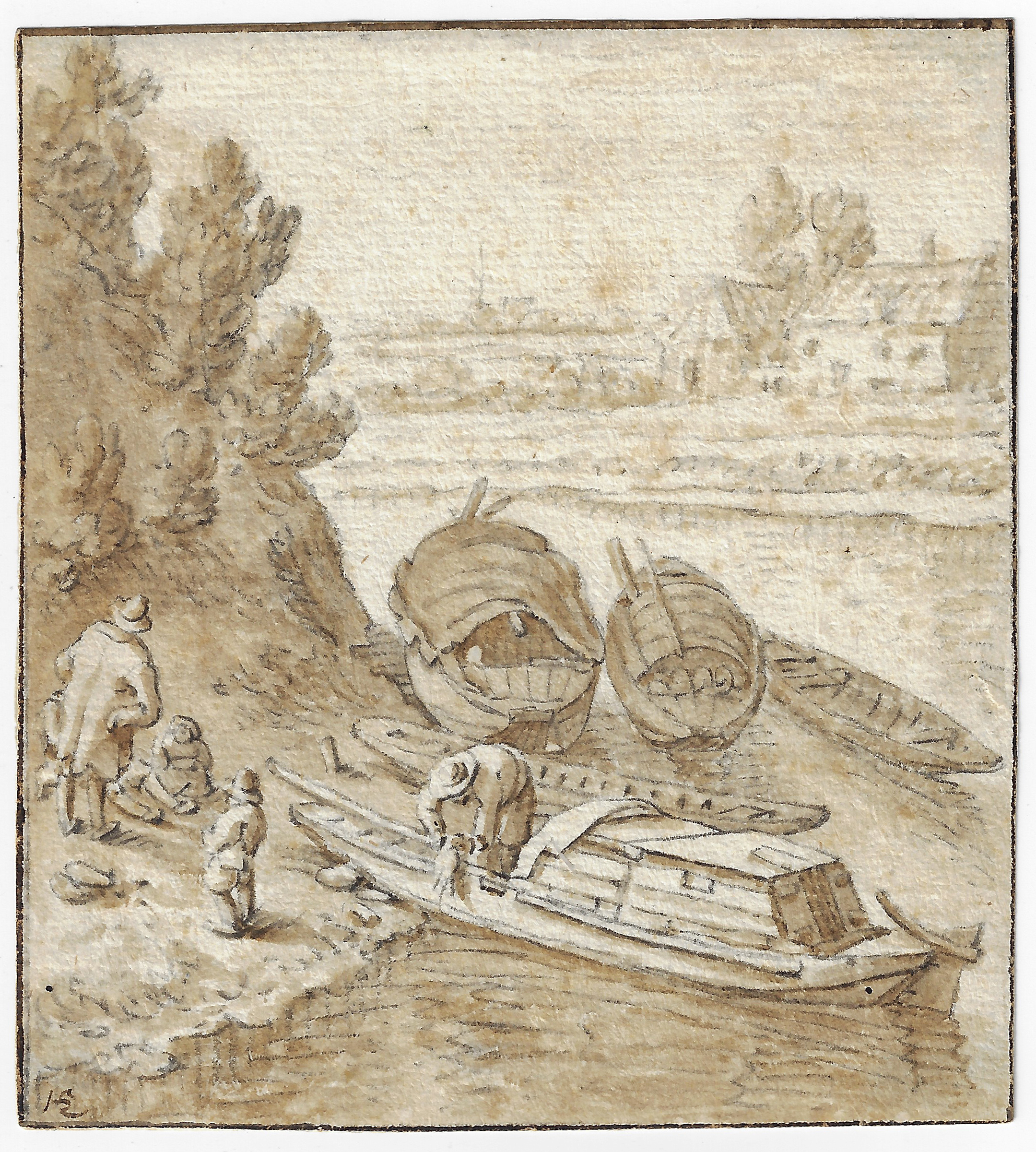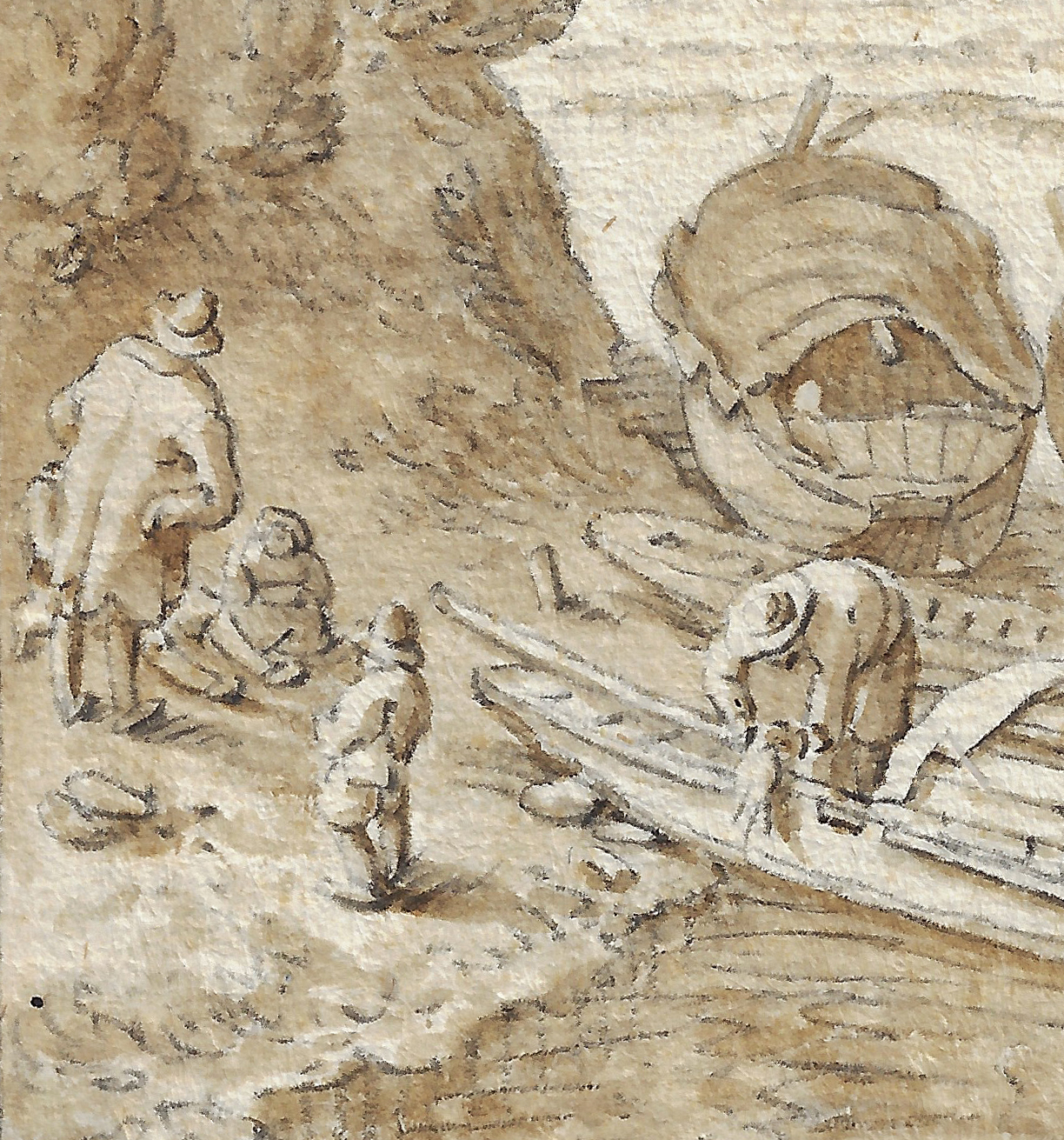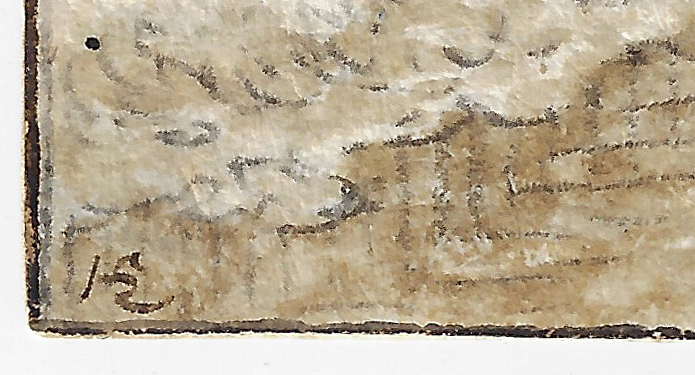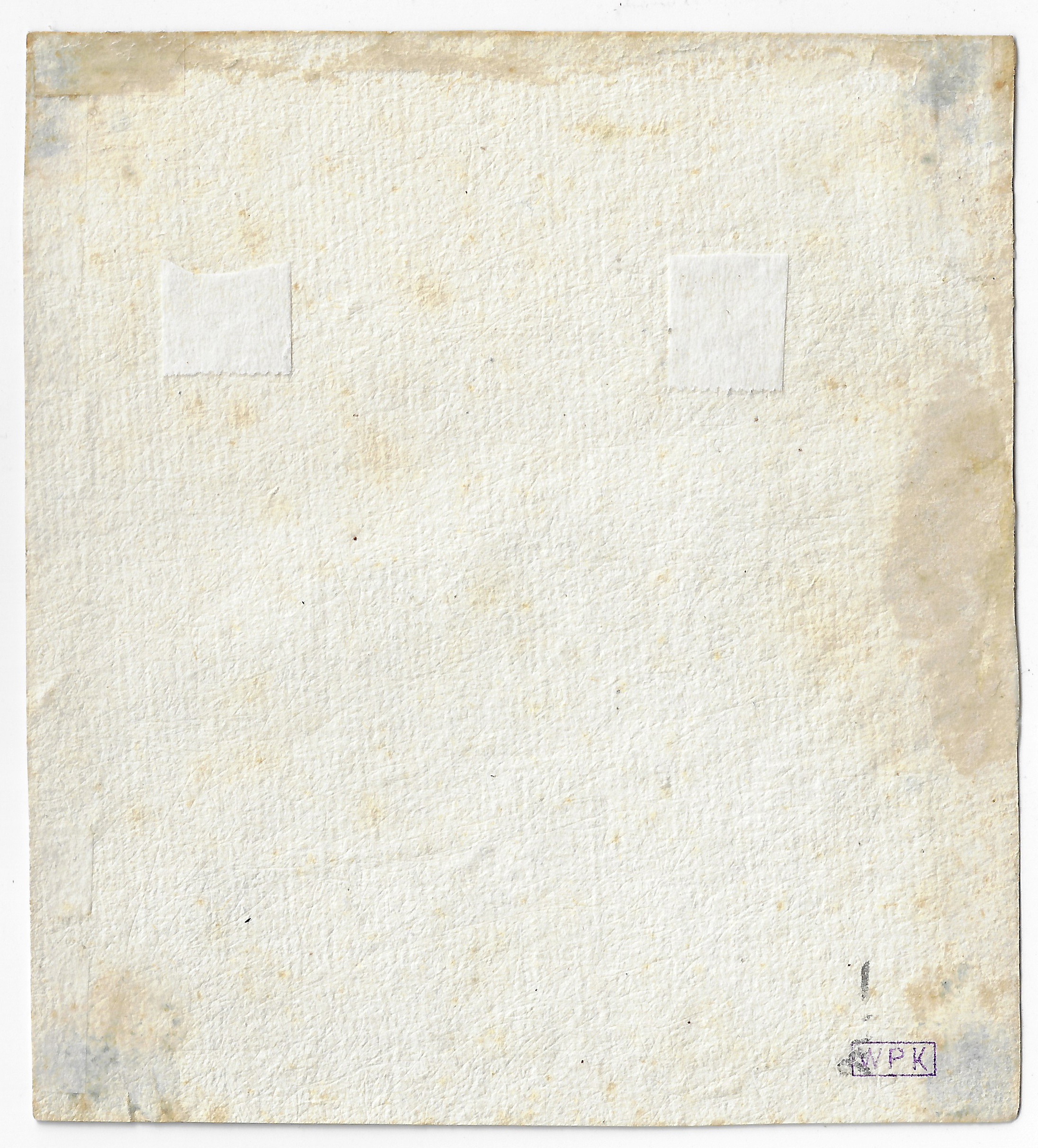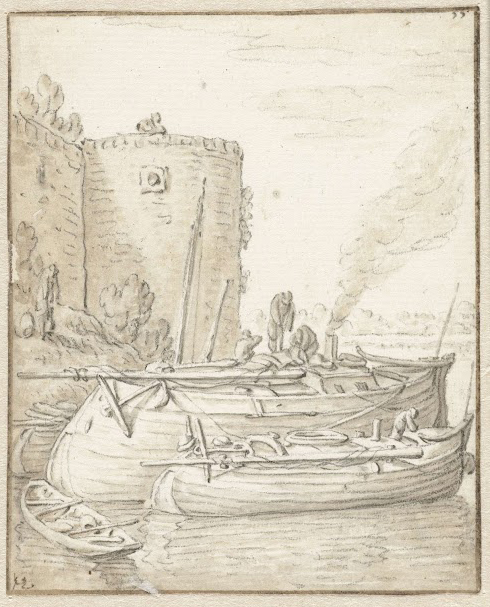HERMAN SAFTLEVEN (Rotterdam 1609 – 1685 Utrecht)
Herman Saftleven (Rotterdam 1609 – 1685 Utrecht)
Boats Moored by a River Bank with a Family on the Shore
Black chalk, pen and brown ink, brown wash, brown ink framing lines, 97 x 88 mm (3.8 x 3.5 inch)
Monogrammed ‘HSL’ (in ligature, brown ink, lower left)
Provenance
~ Possibly William Mayor (d. 1874)
~ William Pitcairn Knowles (1820–1894) (Lugt 2643, the mark applied on the verso)
~ Guy Bellingham-Smith (1865–1945); sold at Frederik Muller, Amsterdam, 5 July 1927, part of lot 296
~ Daniël George van Beuningen (1877–1955)
~ Christie’s, Amsterdam, 16 November 1981, lot 134, repr.
~ Private collection, France
Literature
Wolfgang Schulz, Herman Saftleven 1609-1685: Leben und Werke, mit einem kritischen Katalog der Gemälde und Zeichnungen, Berlin 1982, p. 454, cat. no. 1293
***
Herman Saftleven was born into a family of artists.1 His father, Herman the Elder (c.1580–1627) fathered three painter sons, Herman the Younger, Cornelis (1607–1681) and Abraham Saftleven (c.1611/13–c.1646), of whom Herman and Cornelis are considered the most talented. Around 1632, Herman established his studio in Utrecht, where he married Anna van Vliet the following year. He became an extraordinarily productive painter, draftsman and etcher. Among his patrons were Stadtholder Frederik Hendrik and the City Council of Utrecht, for whom he made a series of topographic drawings in 1647-48 and in 1669. Between 1655 and 1667 he held various administrative positions in the Utrecht guild of St Luke.
In the early 1650s Saftleven travelled along the Rhine and Moselle rivers, which were to exert a lasting influence on his work. During his travels he drew a series of views of Rhine towns, from Arnhem and Cleves to Bingen, near Mainz. Once returned to his studio, he transformed these travel sketches into finished drawings and paintings. Many drawings of this sort are preserved as part of the Atlas Bleau, assembled by the Amsterdam lawyer Laurens van der Hem, and now in the National Library in Vienna. Saftleven frequently annotated his views on the reverse with general indications such as ‘By den ryn’ (near the Rhine) or ‘duits gesight’ (German view),2 or with more exact identifications, such as ‘by hamerstein’ on a view of Hammerstein in the Amsterdam Museum.3
Saftleven’s Rhine landscapes were highly successful and became increasingly picturesque over the years, abandoning topographical accuracy for imagined pretty views based on his travel impressions. They were praised by the Dutch poet Joost van den Vondel in an elaborate panegyric in 1660, praising how Saftleven’s views enabled art lovers to make a fantastic paper journey along the Rhine.
The present sheet also most likely represents an imagined Rhine view. Saftleven’s monogram in the lower left corner suggests the small-scale sheet was intended as a finished work of art for specialised collectors of ‘papierconst’, paper art. Our drawing can for instance be compared to a sheet of nearly identical dimensions in the Rijksprentenkabinet (fig.).4 This drawing once formed part of the collection of Daniël George van Beuningen (1877–1955), one of the founders of the Boijmans Van Beuningen Museum in Rotterdam.
1. For the artist, see Wolfgang Schulz, Herman Saftleven 1609-1685: Leben und Werke, mit einem kritischen Katalog der Gemälde und Zeichnungen, Berlin 1982 and J. Nieuwstraten, ‘De ontwikkeling van Herman Saftlevens kunst tot 1650. Spiegel van stromingen in de Nederlandse landschapschilderkunst’, Nederlands Kunsthistorisch Jaarboek 16 (1965), pp. 81-117.
2. See Ben Broos and Marijn Schapelhouman, Oude tekeningen in het bezit van het Amsterdams Historisch Museum, waaronder de collectie Fodor. Nederlandse tekenaars geboren tussen 1600 en 1660, Amsterdam/Zwolle 1993, p. 158.
3. Black chalk, grey wash, 192 x 286 mm, inv. no. A 18057; Broos and Schapelhouman (op. cit.), cat. no. 119, p. 158.
4. Pen and brown ink, black chalk, 99 x 80 mm, inv. no. RP-T-1882-A-181.
